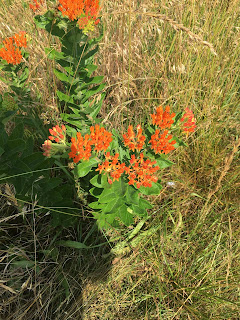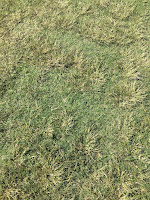As I sit staring out at the ice covering the trees, the road, even Lucy when she does go outside, lead me to my thoughts today. It is something I had been working on for the last week in my head, but Mother Nature cleared it up for me with the weather of these past two weeks. Missouri seems to be a special weather phenomenal location, of course this might be true of many locations in the transition zones. My previous locals have either been the deep south such as Florida, or in true northern climates such as New Jersey and Northern Indiana. Last weekend here in Missouri we had rain, ice, and some snow, the course shutdown from Sunday to Wednesday as we waited for the snow to melt. By Friday we were back up into the 50's. Along came more ice yesterday (Saturday) leaving roads almost impassible, yet tomorrow will be back up into the 40's and by Thursday we could very well reach 70 degrees.


What leads me to discuss weather was seeing a comment about not relying on dates of the calendar to make certain applications, and me reviewing my data to figure out why some of my programs might not be working as well as I had hoped. I will say I am pretty good about tracking some of my data. I will go out to my weather station regularly (as in daily) during the season and record my minimum and maximum temperatures, soil temperatures (sand based green), wind speed, precipitation, relative humidity, and evapotranspiration (ET). I will mainly use the temperatures daily in season to update my Growing Degree Day (GDD) chart, which I use to monitor when I will make my next growth regulator application. The soil temperature I find very important early in the season, as it will direct me to make preemergent weed and fairy ring applications. Wind and relative humidity plays a part in how closely we will monitor our soil moistures (or should I say, prioritize the monitoring), and the ET will be used to help decide how much irrigation we will provide if needed.



Above is a picture of our weather station. Our ET gauge is on the left, our min/max thermometer in the center, and our soil thermometer and wind/relative humidity reading tool is on the right. It also can read dew points which I heard about in a seminar, which might be a better way to track overall drying conditions, but that is something I will have to work with and figure out how to interpret the readings into my data. I have to say, I know many of my colleagues have weather stations tied into their irrigation systems, or even some have weather stations tied into their data tracking worksheets, where readings are automatically recorded for various information needed, such as disease tracking and growth management, which helps them decide on timing their fertilizer applications, among other things. I'm just a simple folk, (mostly too old to figure out this new fangled stuff, and short of budget), but the information we record is important to all of us in the industry.
Other points of data collection include; a monthly calendar, where I record all activities on the golf course. Be it cultural practices, fertilizer and pesticide applications, rain, irrigation, and even golfer information, such as if we were open for play or allowed carts, I find all this information useful at one time or another. Some of this information is duplicated in my fertilizer/pesticide application log, or in my weather log. I also have some other data collecting sheets for moisture readings, but that I will share at a more appropriate time.

Here is the monthly calendar example, even color coded. It helps me identify practices or needed data quicker. To the left are the past 6 years of data collection. I will talk about how being able to reach back that far is helpful in my next post.
To the right is my daily weather log. I record the time I check the weather station, (usually after our first morning jobs), what the current temperature is, the lows from the morning, and the highs from yesterday, (I have my 24 hours resetting about 8:30 - 9:00 AM, compared to the National Weather Service resetting at midnight). Any rain, soil temperature at the time, wind, humidity, ET, and some comments. I will at certain times of the year record afternoon soil and humidity readings. I will also do a monthly temperature average and total rain fall for the month. That information comes in handy when analyzing the month and I use it in my monthly reports.
The last data collection post I will share, has to do with our fertilizer and pesticide applications. I have these going back to 2009 in the format I am sharing in this post, but I can trace applications all the way back to 2005, most of 2004 applications were lost in our shop fire. After a visit by our state Pesticide Bureau, I changed to this format. It wasn't really necessary due to the fact we didn't use restricted use pesticides at the time, but it has allowed me to go back and visit programs to make improvements. The middle sheet is a list of all applications made to a certain location that season, such as greens. The right sheet is an application sheet that list each product, rate, amount, weather conditions, application vehicle or mode, who the applicator was, lot numbers of the products, and any other issues or conditions that might have affected the application. I know there are online formats which I will play with this season, but I will continue this format as well, since it is what our state requires.



This bulk of data I can use to review and improve my programs, and to figure out why we had success and/or failures. In future posts I will discuss an issue, the program, the data, and what changes we might make. I hope to hear what other data might be important for me to track.
Thanks for reading!
Mel
























































